► Jeep’s plug-in hybrid Wrangler
► A best-seller in the US…
► But there’s no 4xe model in the UK
All the icons are electrifying. The Ford F-150. The Renault 5. Alpine’s A110. Porsche’s 911. And now the Wrangler.
Jeep’s tough 4×4 is (so far) only going part-electric. The brand’s new line of ‘4xe’ models are all hybrids in some capacity, with Jeep promising the Wrangler 4xe is one of the most capable plug-in hybrids on the market.
It’s a tactic, and a claim, that’s working in North America: the Wrangler 4xe is the best-selling plug-in hybrid vehicle. Meanwhile, in Europe, half of all Wranglers sold are the 4xe plug-in hybrid. In fact, in some markets like Germany, it’s the only variant the brand sells, from €80,000 (around £70,500) for a Sahara or €82,000 (around £72,000) for a tougher Rubicon model. But it’s not available in the UK, or indeed any other right-hand drive markets.
Even so, we thought it was worth seeing what all the fuss is about.
Why can’t we get the Wrangler 4xe in the UK?
Low demand is the root cause. The Wrangler is already a niche vehicle in the UK as it is, and engineering the right-hand drive version for the UK (and, indeed other RHD) market(s) doesn’t seem commercially viable to Jeep.
Speaking to CAR directly on the matter, Jeep boss Christian Meunier said: ‘I just find it very hard to justify, and I don’t have a team in the UK, or Australia or Japan to convince me that we could make it work.’
Fine. What does the left-hand driving world get that we don’t?
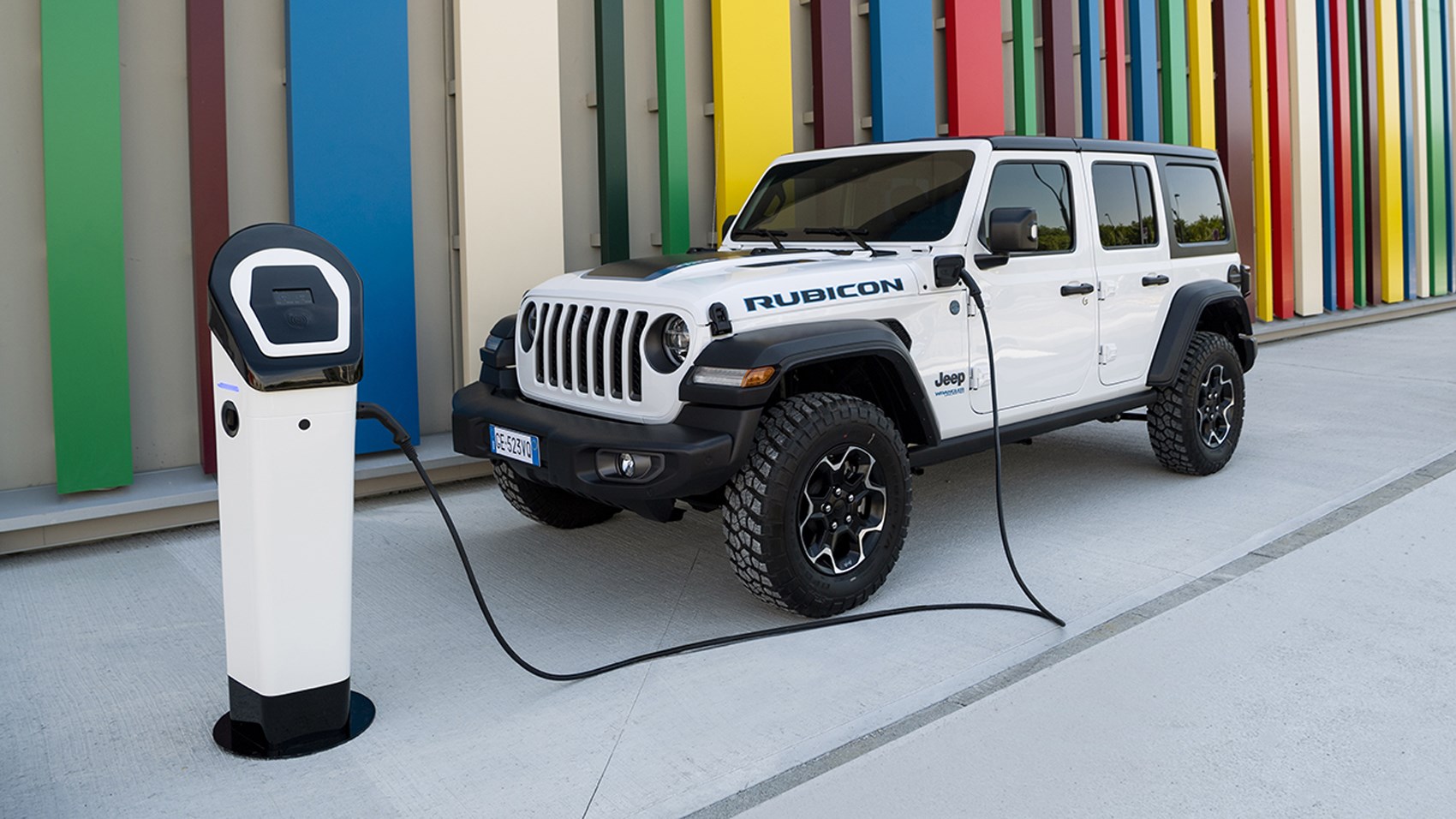
The Wrangler 4xe uses a turbocharged 2.0-litre four-cylinder, an e-motor and a 17.3kWh battery pack in combination, developing a total of 375bhp. The e-motor that delivers power (there’s also a small one that replaces the alternator attached to the engine) is housed within the transmission to ensure the Wrangler’s 4×4 drivetrain remains as flexible as it always has been. That power and performance means the Wrangler 4xe is the most powerful and quickest-accelerating Wrangler this side of the V8-powered Wrangler 392.
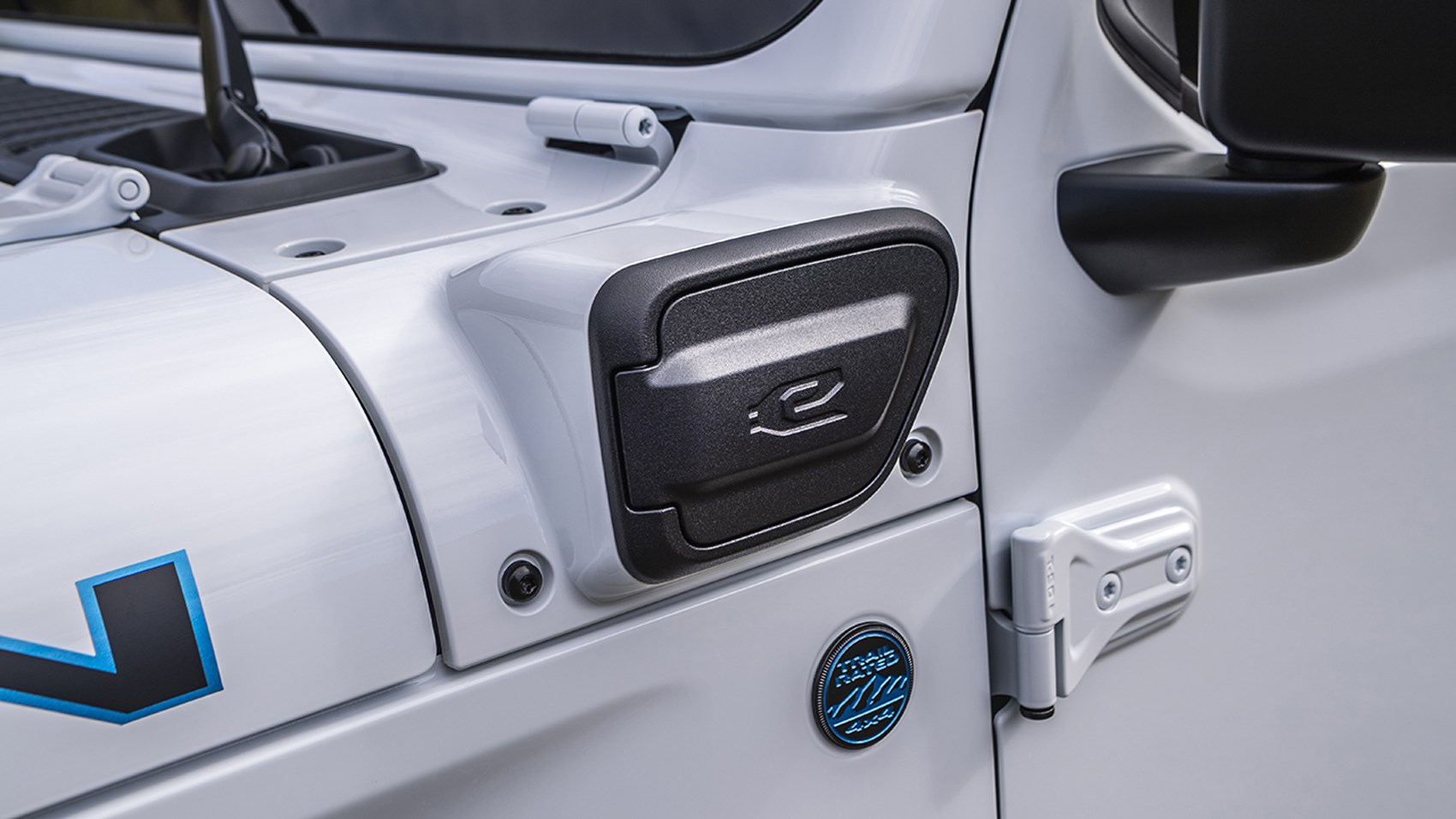
Given the battery pack demands space (and sits beneath the rear seats), the Wrangler 4xe is only available as a four-door model. Jeep claims the Wrangler 4xe is capable of 28 miles of e-range (in Rubicon spec that we’ve tested, pictured) and a full charge on a 7kW wallbox is over with in three hours.
Has anything else changed with the 4xe version?
Despite the significant engineering differences, Jeep is very keen to point out that the 4xe is still as much of a Wrangler as any other variant. You can still specify it with a huge number of accessories, unbolt the doors and fold down the windscreen (only when you’re off the public road, obviously), and the interior is still as utilitarian as ever.
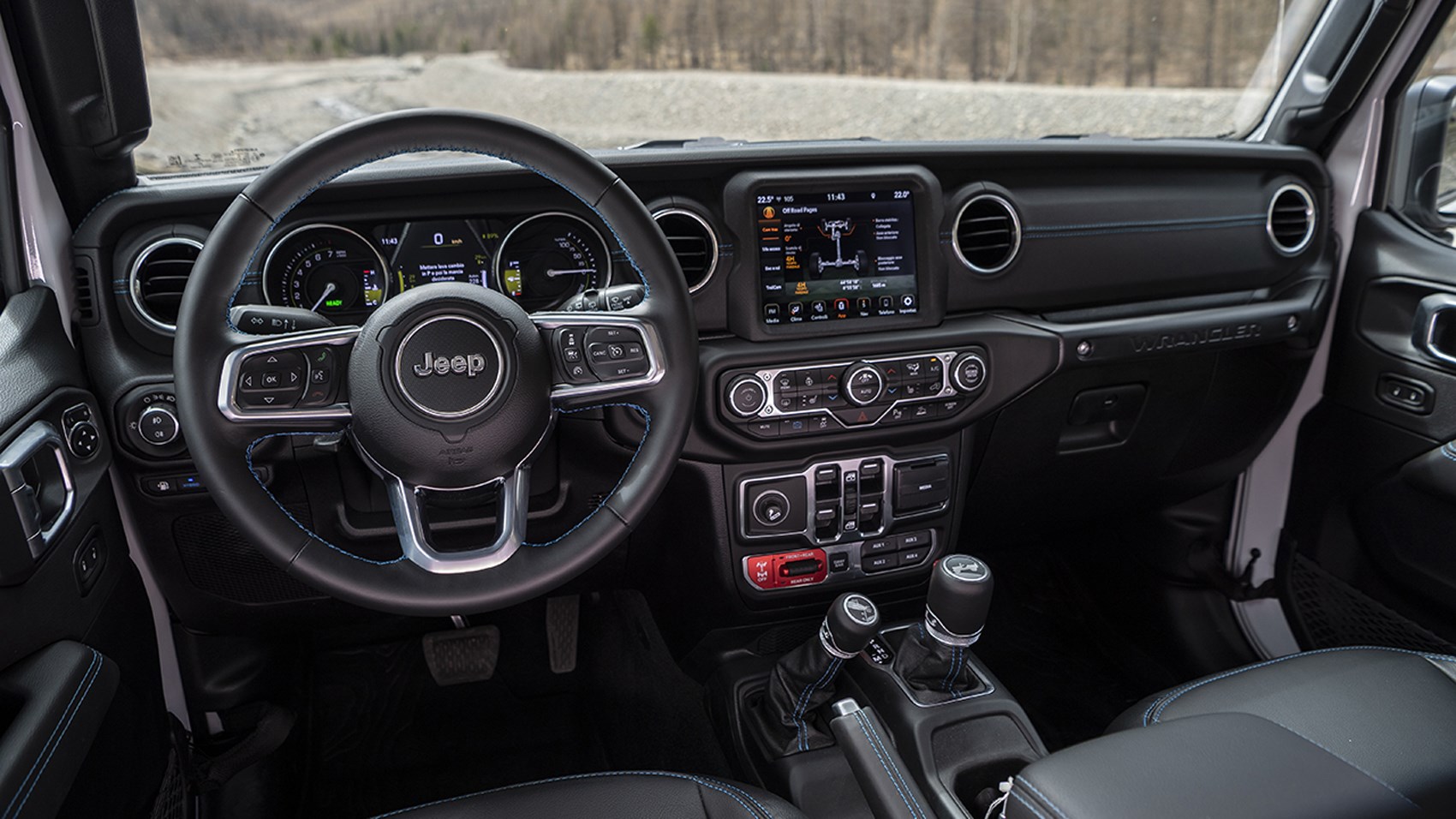
There are small differences, but not enough to spoil the aesthetic. Every 4xe model has blue trimmings and, of course, a separate cap on the bonnet for the charger. Inside, the only differences you’ll spot are the trio of buttons for you to manage the powertrain (electric, hybrid and e-save) and some new graphs on the very usable infotainment screen.
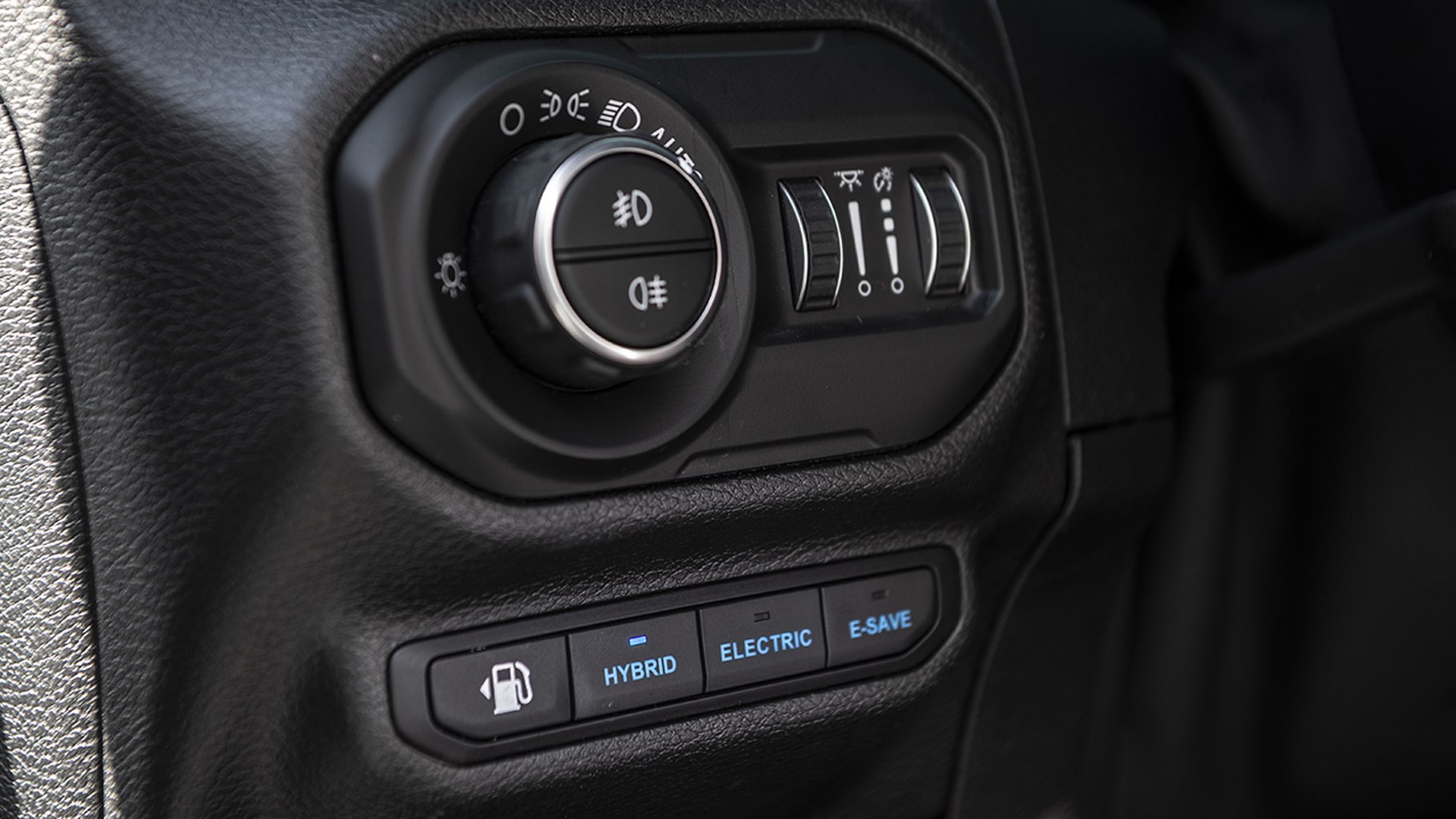
And that’s about it. The four-door Wrangler is still a surprisingly practical car to live with, with good rear legroom and a large boot area, and features a properly screwed-together interior.
So, how does it drive?
Jeep brand CEO, Christian Meunier, tells us how electric power can be a real benefit to driving off-road. Not only are you not polluting the local area to quite the same degree, but the more direct inputs you have with the car when it comes to power deployment can be very helpful.
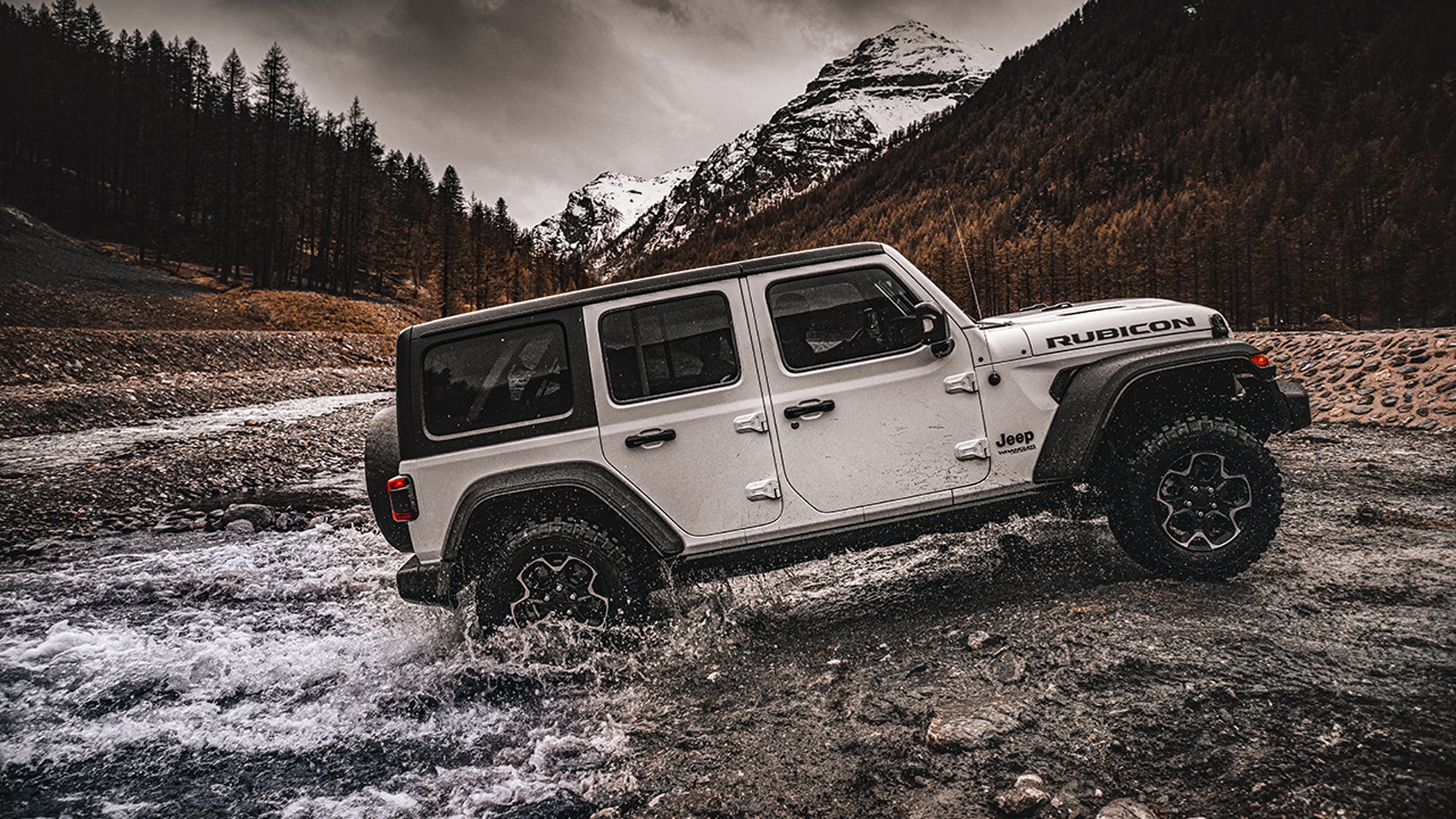
And he’s right.
We tried the Wrangler on a properly tricky off-road course, including steep inclines and descents, rocky terrain, deep water and dusty trails. The Wrangler 4xe’s battery pack is mounted well enough out of the way for it not to be a detriment to the 4×4’s off-road capabilities and the Rubicon version still benefits from its front and rear locking differentials and detachable front roll bar for extra articulation.
How to drive off-road: we tackle the basics in a Jeep Wrangler
That additional power can be helpful when climbing steep terrain, and the regenerative braking applied here (the 4xe has two settings, light or maximum regen accessed via a button on the dashboard) almost acts like a hill descent control. It allows so much more precise throttle inputs – crucial for ensuring as little wheel slip as possible in certain off-road situations – and your entire endeavour has the backing track of a ghostly siren humming as the 4xe’s e-motor does its job.
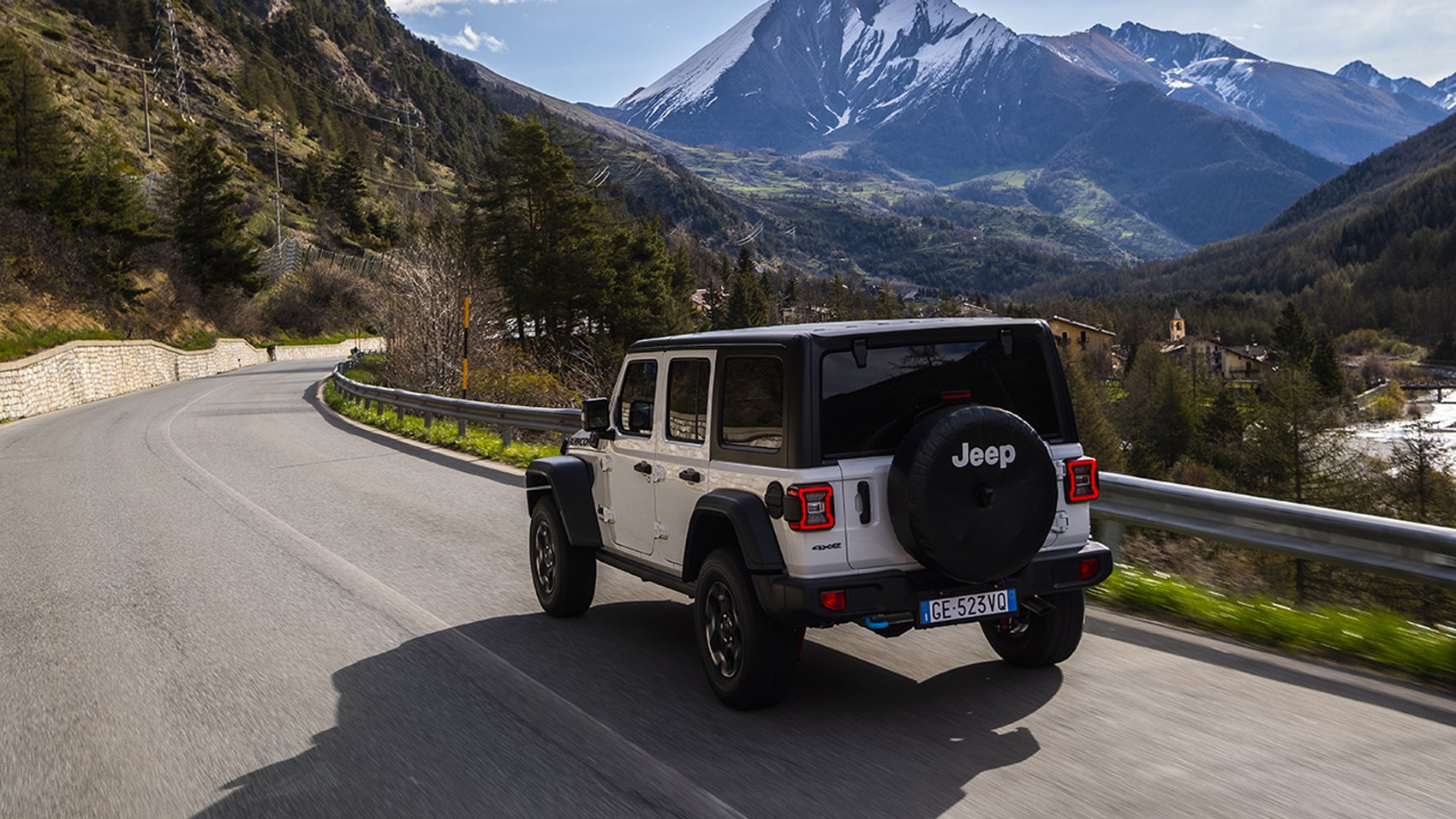
Of course, the Wrangler is still not the last word in general refinement. The 2.0-litre petrol engine sounds rough when it wakes up and, particularly in Rubicon spec with knobbly off-road tyres, the steering is soggy and vague on tarmac, and the suspension is bouncy. But you’re too busy smiling to notice.
It’s just a fun car to be behind the wheel of, and allows those who love to get outdoors and explore to do so properly and with the right tools.
Jeep Wrangler 4xe: verdict
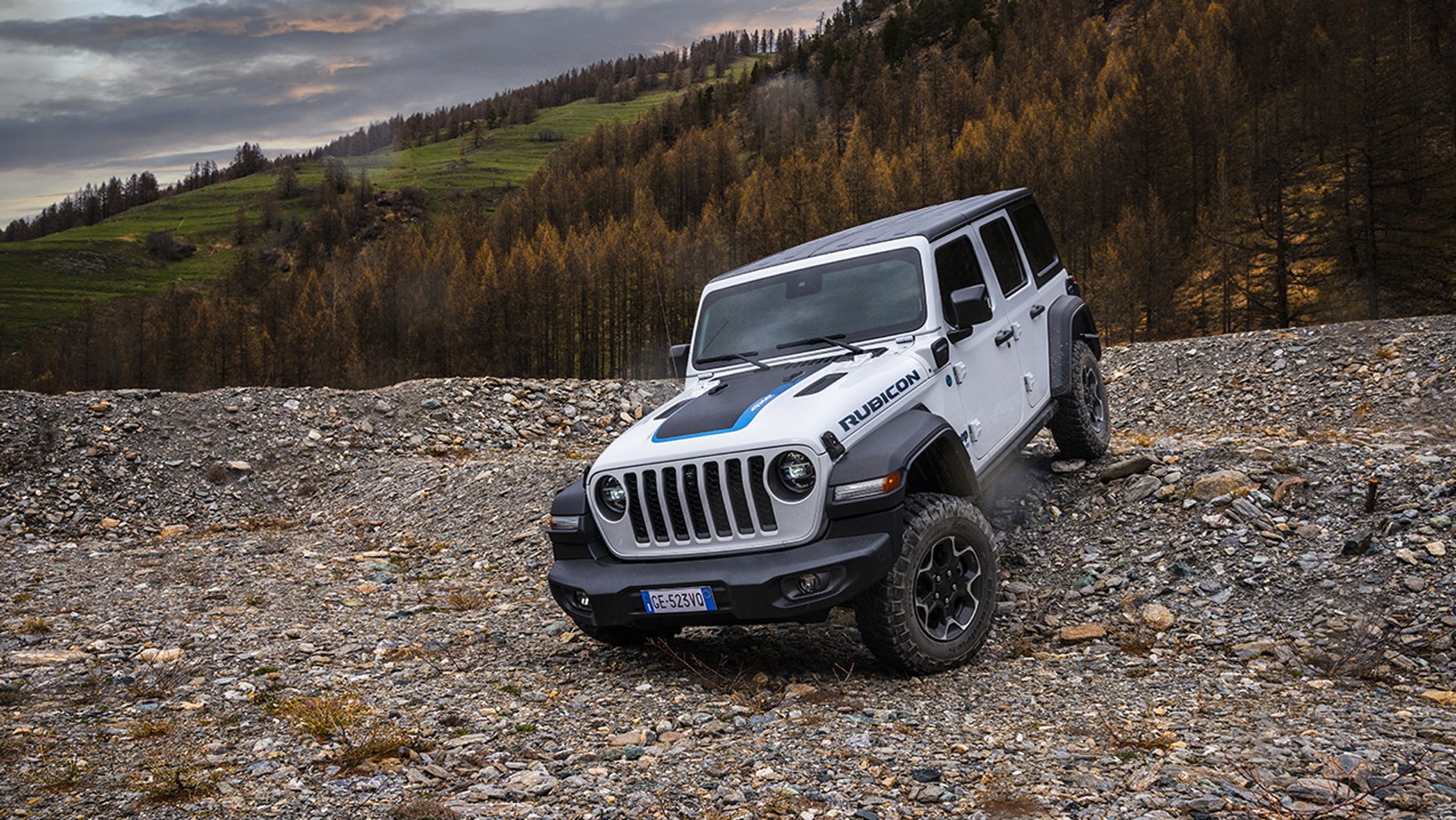
The Wrangler has always been one of those cars that just oozes charm, with its utilitarian design and sometimes-ham-fisted dynamics making you feel like you’re driving an oversized Tonka truck. The inclusion of electric power only enhances the experience.
I won’t say it’s worth Jeep spending any effort in doing a right-hand drive model, as I’m sure electrifying the Wrangler won’t be enough to truly move the sales needle in the UK market. But, even if it’s not meant to be, Jeep has quite possibly made its most flexible and capable Wrangler yet.
Specs are for a Jeep Wrangler 4xe Rubicon